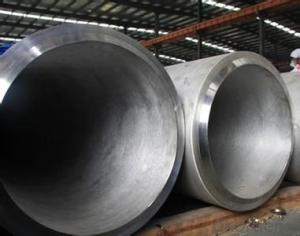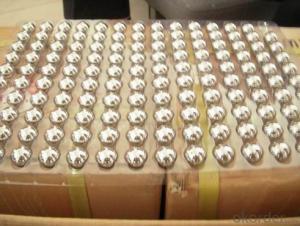Ferritic Stainless Steel
Ferritic Stainless Steel Related Searches
Best Paint For Stainless Steel Blanket Insulation For Steel Buildings Primer For Galvanized Steel Foam Filter For Stainless Steel H S Code For Stainless Steel Surface Grinding Wheels For Stainless Steel Surface Grinding Wheels For Hardened Steel Hole Saw For Stainless Steel Paint For Stainless Steel Stainless Steel For BbqHot Searches
Steel Mesh Panels For Sale Price For Stainless Steel Scrap Scrap Price For Stainless Steel Price For Stainless Steel Stainless Steel Tank For Sale Stainless Steel Sheets For Sale Cheap High Tea Sets For Sale Stainless Steel Tanks For Sale Stainless Steel For Sale High Density Fiberboard For Sale Solar Hot Water Collectors For Sale Scaffolding For Sale In Uae Scaffolding For Sale In Ireland Scaffolding For Sale In Houston Type Of Inverter For Solar Price Of Shipping Containers For Sale Types Of Inverter For Solar Stock Price For Aluminum Used Solar Inverter For Sale Steel Mesh Panels For SaleFerritic Stainless Steel Supplier & Manufacturer from China
Okorder.com is a professional Ferritic Stainless Steel supplier & manufacturer, offers integrated one-stop services including real-time quoting and online cargo tracking. We are funded by CNBM Group, a Fortune 500 enterprise and the largest Ferritic Stainless Steel firm in China.Hot Products
FAQ
- Sanitary and industrial stainless steel pipes differ primarily in their intended use and the level of cleanliness required. Sanitary stainless steel pipes are specifically designed for applications in the food and beverage industry, pharmaceutical industry, and other sanitary environments where cleanliness and hygiene are of utmost importance. These pipes are manufactured with a higher level of surface finish, typically a smooth and polished surface, to prevent bacteria growth and ensure easy cleaning. The inner surface of sanitary pipes is often electropolished to further enhance its smoothness and resistance to corrosion. Additionally, sanitary pipes are often equipped with tri-clamp fittings or other sanitary connections to facilitate easy disassembly for cleaning purposes. On the other hand, industrial stainless steel pipes are used in a wide range of applications, including manufacturing, oil and gas, chemical processing, and construction. These pipes are typically designed to withstand high pressures, extreme temperatures, and harsh environments. Industrial pipes may have a rougher surface finish and may not require the same level of cleanliness as sanitary pipes. They are often welded or threaded together for assembly and are built to withstand heavy-duty usage. In summary, the main differences between sanitary and industrial stainless steel pipes lie in their intended use, surface finish, and level of cleanliness required. Sanitary pipes prioritize hygiene and ease of cleaning, making them suitable for food and pharmaceutical applications. Industrial pipes, on the other hand, focus on durability and strength to withstand demanding industrial environments.
- Type 409 and Type 410 stainless steel pipes exhibit distinct characteristics and are used for different purposes. Type 409 stainless steel is a ferritic variant containing less chromium than Type 410. It is mainly composed of iron, carbon, and up to 11% chromium. This composition grants Type 409 stainless steel adequate resistance to corrosion in low-oxygen environments and moderate resistance to pitting and crevice corrosion. It finds common usage in applications where high-temperature oxidation resistance is unnecessary, such as automotive exhaust systems, catalytic converter shells, and heat exchangers. On the contrary, Type 410 stainless steel is a martensitic variant with a higher chromium content (around 11-13%) and a small amount of nickel. This composition endows Type 410 stainless steel with exceptional corrosion resistance and favorable mechanical properties. It is a versatile stainless steel that can be subjected to heat treatment to achieve elevated strength and hardness. Type 410 stainless steel is frequently employed in applications requiring corrosion resistance and/or wear resistance, including cutlery, surgical instruments, valves, and pump parts. To summarize, the primary distinction between Type 409 and Type 410 stainless steel pipes lies in their composition and resulting properties. Type 409 stainless steel is a ferritic variant with good corrosion resistance in low-oxygen environments, whereas Type 410 stainless steel is a martensitic variant with excellent corrosion resistance, heightened strength, and hardness. The choice between these two types of stainless steel pipes depends on the specific requirements of the application and the desired properties necessary for its success.
- Yes, stainless steel pipes can be laser welded. Laser welding is a highly efficient and precise method of joining metals, including stainless steel. It involves the use of a high-powered laser beam to melt and fuse the edges of the pipes together. Laser welding is commonly used in various industries, such as automotive, aerospace, and construction, due to its ability to create strong and durable welds with minimal distortion. The process is particularly well-suited for stainless steel, as it offers excellent control over the heat input, resulting in a narrow and well-defined weld zone. Additionally, laser welding can be automated, making it a cost-effective and time-efficient solution for joining stainless steel pipes.
- Passivation in stainless steel pipes refers to the process of treating the surface of the pipes to remove any contaminants and enhance its corrosion resistance properties. It involves the use of chemical solutions or acids to remove iron particles and other impurities from the surface, creating a protective oxide layer that prevents further corrosion.
- Stainless steel seamless steel tube, ordinary seamless steel pipe, which is good?
- The general stainless steel tube is wear-resistant, high temperature resistance, corrosion resistance. Plain carbon steel seamless tubes resist pressure better than stainless steel.
- Yes, stainless steel pipes can be used for drinking water systems. Stainless steel is a highly durable and corrosion-resistant material, making it suitable for use in plumbing systems. It is also non-reactive, which means it does not leach harmful chemicals into the water. Additionally, stainless steel pipes are easy to clean and maintain, reducing the risk of bacterial growth and ensuring the safety and quality of the drinking water.
- The lifespan of stainless steel pipes can vary depending on various factors such as the grade of stainless steel used, the environment in which they are installed, and the maintenance and care they receive. However, in general, stainless steel pipes have a long lifespan compared to other materials commonly used for piping systems. Stainless steel pipes are known for their durability and corrosion-resistant properties. They are designed to withstand harsh conditions, high temperatures, and various corrosive substances, making them suitable for a wide range of applications. This inherent resistance to corrosion allows stainless steel pipes to have a longer lifespan than pipes made from materials like carbon steel or plastic. In ideal conditions and proper maintenance, stainless steel pipes can last for several decades or even longer. In some cases, stainless steel pipes have been known to last for over 100 years. However, it is important to note that the actual lifespan can vary depending on the specific application and the level of care provided. Regular inspection, maintenance, and cleaning can help extend the lifespan of stainless steel pipes. This includes removing any deposits or buildup that may occur over time, as well as addressing any signs of corrosion or damage promptly. Additionally, choosing the appropriate grade of stainless steel for the intended application can also contribute to a longer lifespan. Overall, stainless steel pipes are known for their durability and longevity. With proper care and maintenance, they can provide reliable and efficient performance for many years, making them a popular choice in various industries and applications.














































